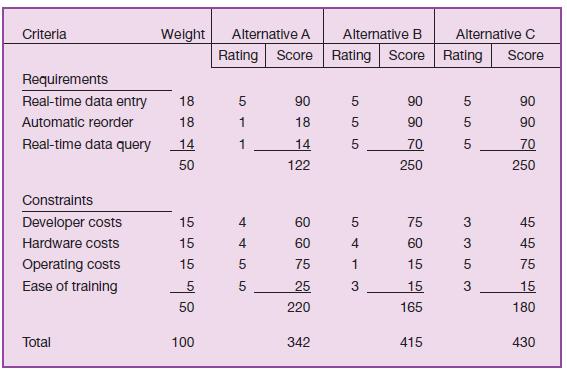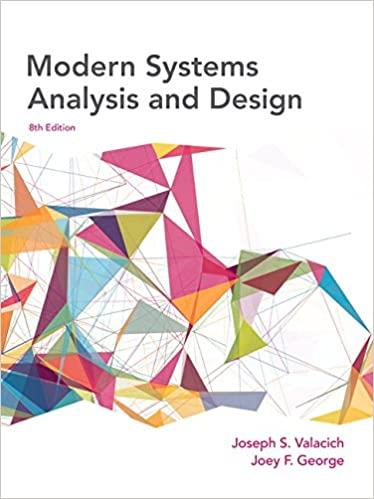J. K. Choi, chief financial officer for Petrie Electronics, came early to the quarterly IS Steering Committee
Question:
J. K. Choi, chief financial officer for Petrie Electronics, came early to the quarterly IS Steering Committee meeting. Choi, who was the chair of the committee, took his seat at the head of the big table in the corporate conference room. He opened the cover on his tablet PC and looked at the agenda for the day’s meeting. There were only a few proposed systems projects to consider today. He was familiar with the details of most of them. He briefly looked over the paperwork for each request. He didn’t really think there was anything too controversial to be considered today. Most of the requests were pretty routine and involved upgrades to existing systems. The one totally new system being proposed for development was a customer loyalty system, referred to internally as “No Customer Escapes.” Choi chuckled at the name as he read through the proposal documents. “This is something we have needed for some time,” he thought. After about 15 minutes, his administrative assistant, Julie, came in. “Am I late or are you early?” she asked. “No, you’re not late,” Choi said. “I wanted to come in a little early and look over the proposals. I wasn’t able to spend as much time on these yesterday as I wanted.” As Julie was about to respond, the other members of the committee started to arrive. First was Ella Whinston, the chief operating officer. Choi knew that Ella was the champion for the customer loyalty project. She had talked about it for years now, it seemed to Choi. One of her people would make the presentation in support of the system.
Choi knew she had buy-in on the project from most of the other members of the c-suite. He also knew that Joe Swanson, Petrie director of IT, supported the project.
Joe was away, but his assistant director, Jim Watanabe, would attend the meeting in his place. Ella had already let it be known that she expected Jim to be the project manager for the customer loyalty system project. Jim had just joined the company, but he had five years of experience at Broadway Entertainment Company before its spectacular collapse. “Good thing I unloaded all that BEC stock I owned before the company went under,” Choi thought. That reminded him of the meeting he had later today to plan the annual stockholders’ meeting. “Better not let the steering committee meeting run too long,” he thought.
“I’ve got more important things to do today.” Next to arrive was John Smith, the head of marketing. John, who was also a member of the steering committee, had been with Petrie for most of his career. He had been with the company longer than anyone else on the steering committee.
Just then, Jim Watanabe came speeding into the conference room. He almost ran into John Smith as he sailed into the room. It looked like he was about to drop his tablet and spill his coffee on Smith. Choi chuckled again.
“Welcome, everyone,” Choi said. “I think we are all here.
You all have copies of the agenda for this morning’s meeting. Let’s get started.”
“Sorry to interrupt, JK,” Ella said. “Bob Petroski is not here yet. He will be presenting the proposal on the customer loyalty system project. I don’t know where he is. Maybe he got held up in traffic.”
“The customer loyalty system discussion is the last item we will discuss today, so we can go ahead with the rest of the agenda. Bob does not need to be here for anything except that discussion,” Choi explained.
Choi looked around the table once more. “OK, then, let’s get started. Let’s try to keep to the agenda as much as possible. And let’s watch the clock. I know we are all busy, but I have a very important meeting this afternoon.
Julie, see if you can locate Bob.”
Case Questions
1. What is an IS steering committee? What are its major functions? Typically, who serves on such a committee? Why do these committees exist?
2. Where do ideas for new information systems originate in organizations?
3. What criteria are typically used to determine which new information systems projects to develop? What arguments might Bob Petroski make for developing the proposed customer loyalty system?
4. Look at Figure 4-4. What kind of information would you need to put together a table like Figure 4-4 to present to the steering committee? How much of that information is objective? Subjective? Justify your answer.
Figure 4-4

Step by Step Answer:

Modern Systems Analysis And Design
ISBN: 9780134204925
8th Edition
Authors: Joseph Valacich, Joey George





